The following essay is based on a lecture I gave on April 27th 2016 in Japanese, hence the Japanese slide visuals, as part of a series of open events called “Profero University”.
The intention is to frame how to think about planning brands in their proper context, and it establishes 7 brand planning principles based on fundamental human psychology:
- Brands exist in people’s brains as a complex set of memories, relationships, associations and emotions.
- People tend to think about brands as if they are people with personalities and relationships to other things, like people they know
- Strong brands are distinctive when they engage your senses and the more senses they engage you through the stronger they are
- Strong brands are unique and distinctive, so brand communications should communicate unique benefits, both rational and emotional. The more mature the market in general the more emotional differentiation becomes important
- Brands with strong narratives will benefit from higher recall, being more compelling to consumers and enjoy word of mouth effects
- When planning communications, think about the reaction you want to elicit more than the proposition you want to ‘insert’, and design a communication or experience that inspires that response
- Global brands are able to target the same emotional positioning, but their communications will likely need to be redesigned in local markets to elicit the same emotional response
Brands only exist inside brains
The idea that brands only exist in brains will strike some people as obvious but I am convinced if you ask the average brand manager or agency account person where their brand exists, what their brand is in fact, many will point you towards the product packaging, the latest advertisement on the OOH signage next to route #246 or in the Yamanote Line’s hangers. For them the brand is the collection of things they are putting out into the world in a relatively controlled and conscious way.
For consumers though, while they may notice some of these offerings they will also notice the brand on the side of a truck that has just cut them up on a highway, as the brand used by that tiresome woman who lives across the street, or fortunately if you are the brand manager recollect it fondly from their childhood. For actual customers their internalisation of the brand will be shaped ostensibly by their direct experience using it. In the words of our industry’s most articulate sage, Jeremy Bullmore, we consumers build our image of a brand “… as birds build nests; from the scraps and straws we chance upon”.
It might take more than a few minutes to persuade our hypothetical brand manager that their brand can only really be thought of as existing inside the heads of the consuming public. But brands really are “only” a psychological phenomenon. Of course this is the reality of everything, not just brands, but it is a simple truth that helps us to, quite quickly reach some important conclusions.
The value of neurone interconnections
For instance, if you take a well known brand, CocaCola say, and accept that it “only” exists in the interconnections of neurones of a few billion people and strip away all the factories, the office buildings and distribution infrastructure they own, a few million dispensing machines in Japan alone, and get rid of all their employees, what is the value of what is left? That value is the business way of defining what a brand is, and in the case of CocaCola an annual Statista study puts it at about $80bn. To put that into perspective that is a little less than half its market cap. I dare say that once you add on the same sort of disembodied value of all the brands CocaCola owns, like Georgia Coffee – a billion dollar brand in Japan alone, Sprite and many others, you may find that the majority of value of the company is actually neuronal in nature.
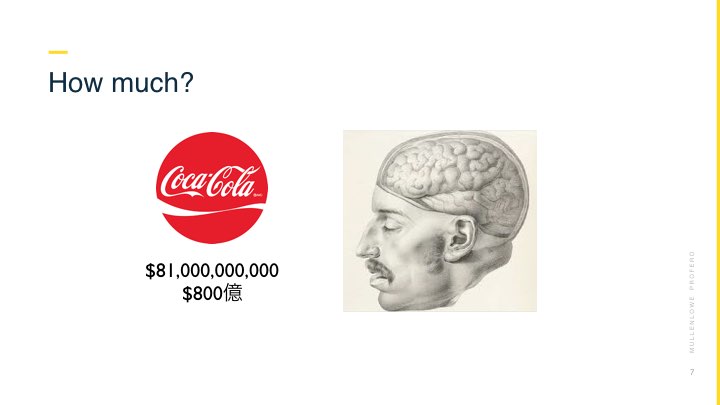
Brands sometimes go up for sale purely as the right to use the mark on products in the future. This has twice been the fate of poor old VOLVO, the once “safe” Swedish car brand, whose mark was re-sold by Ford to a regional Chinese car manufacture Geely in 2009 for $1.8bn. Geely-made Volvo-badged cars are now enjoying somewhat of a “revival”, or so a recent headline told me. Only if we accept the psychological nature of brands can Geely’s nascent international sales figures be considered as a revival of anything.
What mental tools do we use to think about brands?
Human evolution has provided us with the mental tools to categorise and interact with the world around us. For right or wrong, we use the full gamut of our inherited tools when it comes to brands. A hardware x software analogy is apparently pretty useful analogy for the tool kits we have upstairs and with it we can recognise objects like tables and chairs, TVs and computers as objects with certain functions and uses. Our pre-human ancestors did not have TVs, but they were surrounded by objects with utility that they needed to understand, and these were embedded within an intricate eco-system of interrelation, that could also be internalised. But this condition we shared with every other animal species, so it cannot explain the human brain nor the human condition. We could call this piece of software say Mammal Prosper 2.0, or being more generous to homo-erectus and giving her credit for all that dexterity with sharp implements, Hominid Tools v.3.0.
But the human hardware x software package is something else entirely. For instance, it’s ability to transcend domains of space and time without feeling daunted is uncanny: “On this New York skyline, how tall is the building that represents Samsung’s popularity among students? What about housewives?” That’s easy, right? We have created AI solutions that are the world grandmasters of chess and now the even harder asian game “go” as well, but they cannot yet tap-dance across mental planes like an average research respondent.
Use and misuse of our cognitive powers
The human brain is masterful at creating representations of real world inter-relationships: “Hiroki had been jealous of Masayuki’s iWatch, so bought one when he was in San Francisco and made sure it was visible at the sales meeting on Monday morning when he sat down next to Yuko”. OK, so what just happened there? You can’t make this stuff up! But actually this is our daily reality. Many brands become objects of desire, jealousy, status symbols.
As an aside, we really do make stuff up all the time. An extreme example of this habit would be conspiracy theorists, perhaps the most prolific show offs of “Sapiens Advanced 2000”’s ability to perceive causal relationships or associations even when there are in fact none. We do not like to believe that things “just happen”. We seek out webs of causation, and will knit them together based on the flimsiest of evidence. Human brains do not want to accept a significant event as arising as a consequence of insignificant causes.
This ability to form perceptions of relationships between things in an abstract mental space leads to complexity of thoughts and feelings, narratives and stories coalesce and when reinforced over time lead to deep seated beliefs. Even in pre-history, Andean tribal shaman were making sacrifice of the best-loved son in the clan to the sun god in times of drought, asking for forgiveness. More effectively perhaps, aboriginals defined holy grounds where religious lore forbade hunting, hence creating what ecologists now call population refuges that mitigate against species extinction during long droughts. No tribe was without it’s creation myth and appointed tellers of these narratives.
In other words, evolution has provided us with a set of tools with which to survive and may be prosper, but with them even our pre-societal tribes were creating complex and abstract belief structures, some of which were ecologically smart, others less so. So clearly just because evolution increased our mental powers because they aided our survival does not mean that all the ways we express those skills are good for our survival, or make any sense at all.
The origin of the human condition: why us?
How did we get here? What evolutionary pressure pushed for these mental powers? By far the most complex things pre-societal humans had to get their heads around were other humans and their interactions, and the same was true for our the pre-sapiens hominid ancestors from whom we emerged genetically. It was this social context with its infinite potential for complexity that applied the selective pressure to expand our neo-cortex at a rate of change unprecedented among all understood anatomical shifts in the entire fossil record of species. Although society is a relatively recent invention (about 12 thousand years old is the current best guess), there never were pre-social humans because we were living very social lives within clans for millions of years before we became sapiens, effectively as we became sapiens. Being social is actually what turned us into homo-sapiens, and defines our species.
Neither the use of tools nor language is unique to our species. Our stand out cognitive abilities evolved in the context of “multi-level selection”, where individuals (and their genes) competed within their clan for access to food and mates, and where clans competed with each other for access to food, mates and other resources. The uniquely human condition is a direct result of walking the selective tightrope of thinking selfishly (competing in your group) and selflessly (to benefit the group in a competition between groups).
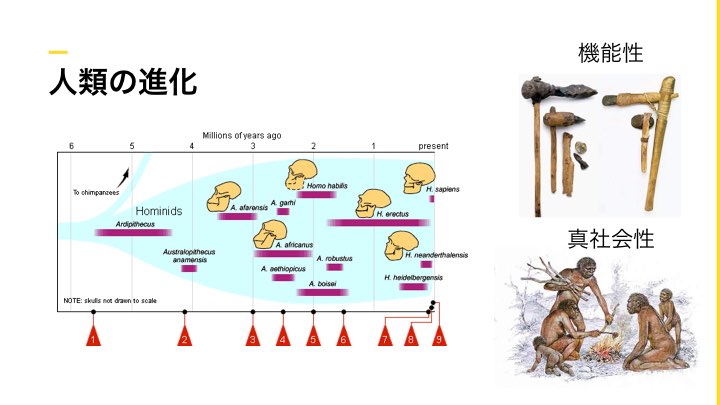
Being socially savvy has always been humanities defining ability. Before they are self-aware human babies can read, with unerring accuracy, the eye line of adults and children around them, to see who is getting all the attention. Mimicry is also a hardwired genetic trait that makes us social before we are language-enabled. We are born with social software pre-installed. “Social Decoder v10” – an OEM deal inked by our ancestors! And so it is that both nature and nurture shape our brains to think about things in terms of personalities and archetypal human relationships. It’s actually really fun for us, and why we like TV dramas, Twitter and celebrity gossip so much.
Thanks to modern society, and no thanks to neo-libertarians nor neo-conservatives for that matter, today even the socially un-savvy have a relatively good chance of survival, some even passing their genes on to the next generation (speaks a proud father of two!). And modern science, perhaps global society’s greatest invention (alongside Japanese electric toilet seats), has equipped us collectively with immensely sophisticated powers of analysis and comprehension to understand all kinds of complex systems, with particularly success in the natural sciences (physics, astronomy, chemistry, biology, medicine, genetic engineering…) and in recent decades thanks to profound progress in research techniques and big-data-driven analysis the human sciences are entering an era of truly scientific objectivity.
But despite this collective progress, in our own day-to-day lives we tend to fall back on our default inherited mental tool-kit for getting our heads round the complex interrelation of things we see, and that means we apply the “Social Decoder” package for understanding brands as well. Our most familiar and comfortable way of making sense of complex, abstract things is to project human-like personality and relationships on to them. Cars become stubborn. Old houses become haunted. Political movements are personified by their representatives. A shampoo becomes kind and caring. We tend to believe things that other people we like also believe, rather than what rationally makes sense.
Anthropomorphism
“anthropomorphism: The attributing of human characteristics and purposes to inanimate objects, animals, plants, or other natural phenomena, or to God”
The application of our “higher” cognitive powers on objects (like products and their brands) is often expressed as anthropomorphism, and you can see it everywhere that humans have expressed themselves, from ancient religions’ representations of ecological systems, to modern UI designs that use characters, to “grumpy cat” on the web. And it is the same with brands. As soon as a brand begins to mean something to someone, they start thinking about it in terms of having a personality, values, beliefs….. They liken it to someone they know, or a societal archetype – in other words to something they feel they know. They group it together with others of its kind.
In this sense our forefathers in the marketing industry did not invent brands. Rather “a brand” is an idea that helps us understand a universal psychological trait of humans in the context of a consumer society.
For these reasons our industry’s professional understanding of brands has more or less evolved with our understanding of psychology, cognitive science and the sociology, but even if a scientific culture did hold sway, which is in general it does not, it would not be a wholly derivative field of the human sciences, since as an area of practice it incorporates the study of business and markets, and touches on law through identity protection. Brands are complex things to grapple with, there is no single lens or approach that captures it all, and for this reason it is a diverse professional field. We can though be more scientific about understanding them than our tribal consumer selves could if we think carefully about how to test assumptions and trial ideas.
But looking at brands through the lens of the human brain’s cognitive tool kit gives us some powerful yet reassuringly familiar ways to start to analyse brands.
Tangible through the senses
All brands leave their mark through one or more of the five senses. Without being tangible they cannot become a brand. Google’s founders understood this when they negotiated to have their logo on the search function they licensed to AOL back in 1998. As AOL’s rigged list of sites became increasingly impractical and inadequate searchers soon realised they should go straight to Google and thanks to the logo placement knew they had found it when they landed. A name and a logo is the typical place to start a brand’s identity, but only the start.
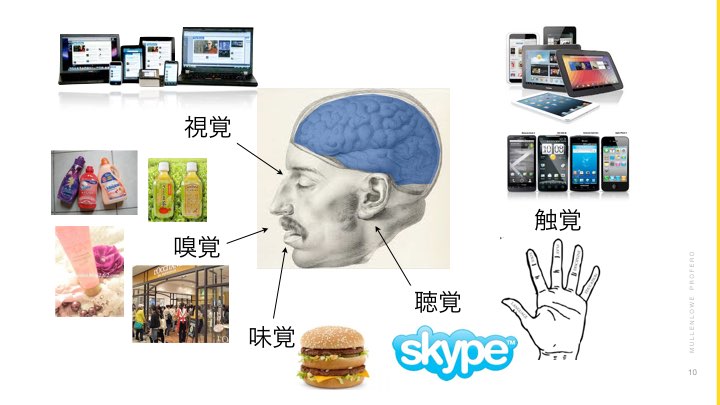
Physical products are usually designed in a couple sense dimensions. Take something as enveloping as a car, and it is talking to you in so many ways, more when you think of its advertising communications, and most of these ways will come out when you drill down in research interviews with owners. They are noticed and the more significant ones remembered and recalled later with little prompting.
Web or cloud based services and software designs usually feel constrained to visual design, which has become a lot more dynamic in recent years with the era of HTML5 and other innovations, but a little ingenuity could help extend them into other dimension more often. A brilliant example from the much maligned Skype (that admittedly pre-dates their acquisition by MicroSoft) is the collective deep breath sound that you hear when it starts up on a desktop machine. This I assume was designed to remind users that it is “on”, because the program forces you to allow it to start up with your machine, so it could be on all the time, vitally important for a computer based telephony service. At least in my mind it has become an intrinsic part of the brand experience and reminds me that Skype is there when I need to ping someone a message.
Some brands rely heavily on their smell: fragrances, foods and drinks obviously, but also cosmetics, soaps and detergents, tissues… where the scent is not actually providing a functional benefit, but is there to add recognition in another, actually very visceral dimension.
The way we smell in fact is actually primordial. Our olfactory centre is plugged straight into the hippocampus, the control centre for long term memory, a structure that is a relic of our reptilian evolutionary lineage and just got coded on top of like the Windows kernel, and it explains that curious experience we must have all experienced when a single smell can bring back a visceral flood of recollection from a bygone era of your life in an instant. It is also why hardware product designers get sweaty palmed at the thought of breaking into the 5th sensual dimension with innovation in devices. Perhaps most significantly for brands, it makes fragrances incredibly visceral ways of communicating, and underpins that multi-billion $ realm for brands.
Coherence over consistency
McDonalds is a brand that believes in consistency of product experience: anywhere in the world a McDonalds burger is a McDonalds burger. Consistency as a fundamental brand principle is also posited by many global advertising agencies not least because it implies that their is a good reason to keep all the money in one place. McDonalds apparently bleaches all the flavour out of its burgers before reapplying the true, authentic McDonald’s burger flavour in liquid form, so at least one element of brand consistency can be executed quite clinically, but I fear the rest is a messier enterprise.
While consistency is important for brands, it can also come at a heavy cost by limiting a brand’s agility in appealing to diverse audiences and be relevant in a variety of contexts and indeed markets. Looked at as a psychological phenomena, the science tells us that “coherence” more than consistency is the more appropriate ideal for brands to aspire to when the building materials are being planned for the nest-weaving consumers to forage and chance upon. Because our brain’s processing and memory is associative, a multi-faceted coherent brand is going to become more of a meaningful and rewarding part of a person’s psyche than one that is consistently the same. Joined up dots are great, but the dots do not have to be the same colour.
This is not to imply that McDonalds are wrong to do what they do, or global agencies for that matter. Their success speaks for itself in both cases, but brand planners would do well not to conflate these two important ideas or over simplify them.
Functional & emotional differentiation
Judging the functional performance of a product could in theory be done without abstract reasoning or emotional complication. If a product does not do what it is supposed to do very well, it is hard to remain enamoured with it, so there is a basic performance level that one would assume no emotional charging can override, but it is also pretty hard to keep Social Decoder v10 out of act of consciousness, and so functional and emotional processing are usually intertwined. One reason for this is a psychological effect called “priming” in which an apparently unrelated suggestion or context to a judgement has a terrifyingly large effect on the outcome.
Again we can note that just because the way our brains work is the result of natural selection does not mean that everything about them is or was at some time useful or selected for. Important abilities that were selected for, such as associative thought, come at the cost of not being able to switch them off when they are not needed or appropriate. Psychology department libraries are now filling up with research papers showing with mounting scientific certainty the systemic errors and irrational traits our brains are guilty of.
Doubtless to the disappointment of conspiracy theorists outside the advertising industry I can assure you that conscious exploitation of these mental foibles is not at all rife in advertising agencies. But there are plenty of enormous industries that are quietly founded on them. For instance, it turns out that we have an illogically heightened aversion to loss, meaning we are prepared to pay over the odds to avoid feeling a sense of loss, a trait that is absolutely related to our emotional circuitry and systematically exploited by the insurance industry, which of course came about well before this fact was well established. If people want to pay more for peace of mind, who are the sensible business people in the insurance industry to stop them?
Disruption of emotional drivers
Brands are almost always competing in a marketplace with other brands. In many markets, particularly mature categories, the functional differences are pretty small and not very newsworthy or worthy of loyalty. In these markets brands usually look to deepen their emotional value to consumers requiring a unique emotional appeal, or at least a more compelling way to communicate a relevant one.
If there is a dominant mindset in the market, then brands will naturally try to associate themselves with that way of thinking and feeling, and position themselves emotionally relative to it. If this is done successfully through resonant communications, a single brand can win a large share of the category despite having relatively little if any functional advantage over competitors.
However, if the whole category is aligned with the dominant market mindset, and there is little differentiation of any kind, just clutter, it can create a big opportunity for a new entrant to come in with a contrasting proposition, that resonates with deep underlying the target audience and the trends in the market, and can rise to dominance really very quickly if executed well.

A category that is going through this sort of psychological transformation is the job boards market – the websites where people go to search for their next job. These job boards have in their advertising typically focused on the negatives: the frustration, boredom and even resentment of an unfulfilling role, and approached that obviously worked very well since everyone copied it. But Indeed.com have become the world’s biggest job site not only through having an innovative product, but an innovative emotional proposition based on the excitement and sense of opportunity of finding the perfect job match with a new employer.
The power of narratives
We have already touched on the human psyche’s love for a good yarn. Narratives bind otherwise disparate facts and events together into a comprehensible whole that is memorable and transmissible to kin and fellow clansmen alike. There is in fact a lot of evidence that there are archetypal story arcs that recur consistently throughout the mythologies of tribes and societies so disparate that there is no way they could result from inherited culture, but instead have emerged as fundamental to the human condition. The Hero with a Thousand Faces by Joseph Campbell is the founding text of this body of anthropological study, and it was this masterful work that George Lukas used as a manual for crafting the Luke Skywalker story arc, the enduring, multi-generational appeal of which my family toy and entertainment collection can testify.
Brands with strong founder stories are particularly lucky beneficiaries of the power of story, and there can be no bigger beneficiary than Apple, which saw its prodigal son Steve Jobs banished (when he was kicked out by the board back in the ‘80s) only for “the return of the hero” chapter to play out just as the profits predicted to astonishing success. Despite his tragically premature passing Apple continued the astronomic rise that he instigated, becoming the most valuable company and brand ever, and the aura of his genius for product design envelopes Apple’s products still for so many of us today and we do not see them through a purely functional judgement.
Brands rarely get to write their own narratives in a controlled way, such is the vicissitude of commerce. But the smart ones do a good job of telling their own myths and story arcs in a compelling way through the media. One brand that very consciously created their own mythology is Salesforce. Marc Benioff created Salesforce from an apartment in San Francisco with the defining mission of “The End of Software”. His alternative was cloud computing and software-as-a-service. At the time, back in 1999, the software industry was a juggernaut, and cloud computing had barely got off the ground, so this was an outrageous statement.
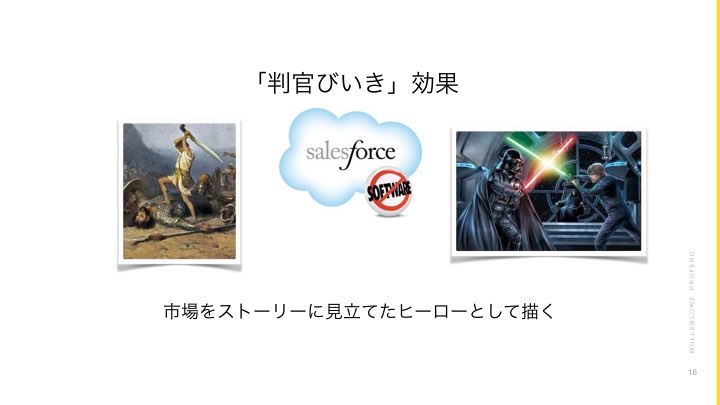
But Mr Benioff knew what he was doing, having worked for one of the behemoths of the IT establishment, Oracle, for 13 years, where he became a VP at the age of 27, and had already decoded how to build brands in the “me too” culture of enterprise technology before setting out on his own. He knew that his David vs Goliath type narrative was going to play very well with the restless minds of the stuffy world of corporate IT, starting with the tech journalists, and if executed on strategy could become the sort of self fulfilling prophecy that removes so many hurdles for growing enterprises, and so it has proved.
Live events as life events
Crowds switch us on. Our heart rates goes up. We become more alert. Our brains are flooded with chemicals that increase the potentiality for forming new neurone connections and hence memories. We are primed for making new social connections. Why is this?
Imagining life on the savannah for our evolving ancestors, despite the threat of predators, most of the time would have been quite dull I suspect. (Is modern life so much more exciting?) But when things did kick off I it must have been pretty important for the future of an individual’s genetic code for them to be able to keep their wits about them. For one, life back then was episodically incredibly violent. Clans regularly fought brutally, the losing side was often annihilated, particularly the males, and in-fighting was often common leading to rifts and clan splintering.
Genes that promoted brave, selfless and loyal actions to the benefit of your clan (and hence genes like your own) would have a better chance of surviving. But then so would those which gave a tribesman or woman the sense to see when a change of allegiance might be for the best. Discretion the better part of valour? Both loyalty to the last and desertion have their place in our evolutionary legacy.
I would like to think that it was not all bad, and that for every one of those “survival” type events there was an “opportunity” type of occasion, otherwise why would Indeed.com’s strategy be working so well today? Surely early humans had their mixer events? Go-kon style partner matching rituals? The sub-conscious physiological changes during courtship (dilated pupils, pheromone signals etc) have been well studied and salaciously popularised in the media so I will not go into them here, but suffice to say that this is probably another human “capability” that we find harder to turn off than we might like to admit.
Given all this I find it hard to argue with a brand’s investment strategy on the very rare occasions I am invited to a lavish brand event with attractive people giving out refreshments and an interesting gathering of guests, provided the brand has a relevant role and presence as part of the occasion. Sponsored music events are of course a mainstay of many a brand’s marketing spend and I have a suspicion that music has a uniting effect that may be genetic in origin, but I have never read convincing proof myself.
Identity and higher purpose
There is a group psychology effect that has been observed clearly in experiments so consistently and in broad enough demographics to suggest that it could be universal. The scenario is as follows. Participants are divided randomly into groups, and then have to interact with each other within the groups, aware of the existence of the other groups, but are not told how or why they have been divided and put into groups. There are some mildly competitive arbitrary interplay facilitated between the groups. After a couple of cycles of this invariably the groups agree within themselves that there is very obvious reason why they have been brought together, a group-defining trait, and that it is has to do with them being superior in some way to the collection of individuals in the other groups.
Can this effect explain that all the world’s religions can all be more right about their primacy than each other? I am not sure, but it stands to reason that a clan exhibiting this type of self delusion would be able to establish a common sense of identity and hence unity, and that provided the sense of priority did not verge on complacency, they would have a competitive advantage over a clan that did not.
Anecdotally from my own experience I regularly play 6 aside football, where the participants are randomly divided into 3 teams, where the pool of players is always quite different from the week before, and yet despite the randomness of the team selection being understood by all, by the end of the session there is a strong sense of camaraderie among the team. My experience is thus that we are able to bond with alacrity and form alternative bonds the next week without any sense of inner conflict. Or am I just especially fickle?
Also anecdotally, I have witnessed many an impassioned pledge of devotion to one mobile operating system over another in recent years, and been antagonised over my particular choice on numerous occasions, I find it hard to believe that the human capacity for allegiance, both short lived and deep seated, is not readily applied to people’s attachments to brands.
Of course our choice of brands does not lead to “selective pressures” of a Darwinian nature in any real sense today, but if we were not able to make up our minds on which side of the fence we want to fire up the BBQ and then be content with that choice, life might be measurably more stressful. But the importance of having a sure sense of who we are might just be something we share with our distant forebears, and ultimately the only meaningful way to define who we are as individuals is in terms of the decisions we have individually had to make.
Hence in the consumers societies in which we live today, brand choices can feel very significant, which makes them very significant on a psychological level, so we should not be surprised when market research finds that people see some of them as fundamental to their identity.
Caught in the academic cross-fire
We have to be cautious when trying to draw sweeping conclusions about modern society based off inferences about our evolutionary context. A good deal of what I have written in this essay could be labeled as evolutionary psychology, bordering on socio-biology applied to humans, which some feel does not have a place in science. My counter would be that without referring to our evolutionary context we can’t begin to explain the human condition, without I suppose resorting to religion or philosophy, neither of which can satisfy my curiosity. And besides, academic debates are usually too polarised, and the truth is somewhere in between to opposing sides. The most important foundation I am leaning on is the social-group and multi-level selection origins of our species which, based on my reading, is the most peer-accepted theory (especially after recent computer modelling showed that kin-selection could not explain the observed distribution of genes in extant populations).
My personal outlook can be illustrated with reference to two good friends of mine, one who says he does not smoke because his father was a heavy smoker, and my other friend who does smoke because his father was a heavy smoker. Ultimately it’s your choice. I am a firm “believer” in freedom of choice and do not believe anything I am writing here contradicts this belief. The effects I have described are statistical traits and do not dictate everyone’s behaviour all of the time, nor is the mind a strait jacket. But from the point of view of someone trying to plan a successful brand and business you only need the market landscape to be tilted a few degrees in your favour to establish a significant advantage over the course of a handful of sales cycles, so I believe they represent valuable ideas to test in the context of your market.
How to plan communications
For many years communication planners approached advertising as a way to insert messages into people’s heads, and assuming them to be rational and straightforward in their thinking, to accept and take on those messages as beliefs. In fact unenlightened brands and agencies still do and amazingly they get away with it, mainly I think because the rigid logic they apply is marginally better than the chaos that might ensue if there was no structure at all. But there is no path to the truth possible in their approach so I for one would sooner leave the industry than go that way.
A more true-to-life (or true to how human brains work) yet still simple and intuitive way to plan communications is insist that since all advertising sets out to achieve responses, and since only responses are measured, all communications objectives should be set not in terms of input or ‘propositions’ but in terms of desired response: specifically from the senses, the reason and the emotions.
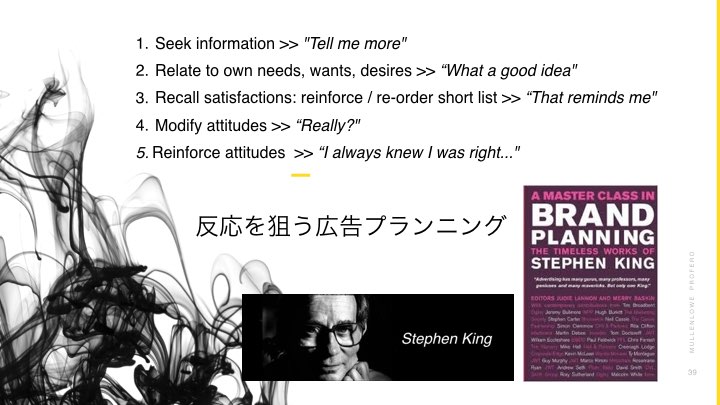
It’s a testament to the brilliant intuition of Stephen King and his fellow pioneers at JWT London in the 1960s that his framework is still as relevant and useful today as it was 4 or 5 decades ago. The framework describes 5 intuitive, archetypal reactions that lead to actions that vary between Direct to the Indirect in terms of how the actions connect back to the brand.
(Direct)
- Seek information >> “Tell me more”
- Relate to own needs, wants, desires >> “What a good idea”
- Recall satisfactions: reinforce / ro-order short list >> “That reminds me”
- Modify attitudes >> “Really?”
- Reinforce attitudes >> “I always knew I was right…”
Perhaps the most important implication of applying this framework over others is that it gives creative people the freedom to develop the communication, the stimuli, in the way most likely to elicit the desired response.
Universality of human emotional reactions
I have been known in the past to make a case for exceptionalism when it comes to how consumers in culturally distinct countries like Japan are wired. Does not the differences between consumers say in the US and Japan precludes a globally consistent brand strategy and communications defined in emotional terms?
I believe most people have a quite distorted view of the genetic make up of the human diaspora. I know I did until fairly recently. You hear of pre-human skeletons being discovered in South Africa from a million years ago (e.g. homo erectus) or in a Spanish cave systems (Neanderthalis) or dug up in Inner Mongolia (Denisovans) and you get the impression the human line came from all over. In fact, all these species also originated in Africa like us, but left Africa and colonised Europe and Asia, only to ultimately die out.

Sapiens originated in Africa as a very tightly defined species genetically, owing to the fact that at some point our population was whittled down to just a few hundred or maybe thousand individuals , and only emerged very recently from Africa, certainly no more than 100,000 years ago, probably more like 40,000 years. There was some interbreeding with Neanderthals in Europe which gave rise to some distinct adaptations to the cold climates in Northern Europe, but basically we are of very pure stock.
Global genetic diversity studies have shown that there is less genetic diversity (a statistical measure of variation in our genomes) than exists in a single group of chimpanzees in East Africa. This astonishing fact explains why a smile is a smile is a smile, wherever you go on the planet. Why the sort of innate, subconscious reactions to certain situations I have been describing are actually universal human traits that apply to consumers anywhere. The same cannot be said of other primate species for instance.
The importance of establishing this fact to further embolden moral progress as a global community cannot be overstated, but the implication for brands with global aspirations is also profound. It means that defining a brands emotional relevance can be done at a global level. Also that a “global campaign” can see to elicit exactly the same emotional response from audiences anywhere in the world. What it does not mean is that you could expect the same creative execution to be able to elicit the strategised response. For that you do need creative people in tune with the local audience and their cultural conditioning.
Seven brand planning fundamentals
- Brands exist in people’s brains as a complex set of memories, relationships, associations and emotions.
- People tend to think about brands as if they are people with personalities and relationships to other things, like people they know
- Strong brands are distinctive when they engage your senses and the more senses they engage you through the stronger they are
- Strong brands are unique and distinctive, so brand communications should communicate unique benefits, both rational and emotional. The more mature the market in general the more emotional differentiation becomes important
- Brands with strong narratives will benefit from higher recall, being more compelling to consumers and enjoy word of mouth effects
- When planning communications, think about the reaction you want to elicit more than the proposition you want to ‘insert’, and design a communication or experience that inspires that response
- Global brands are able to target the same emotional positioning, but their communications will likely need to be redesigned in local markets to elicit the same emotional response

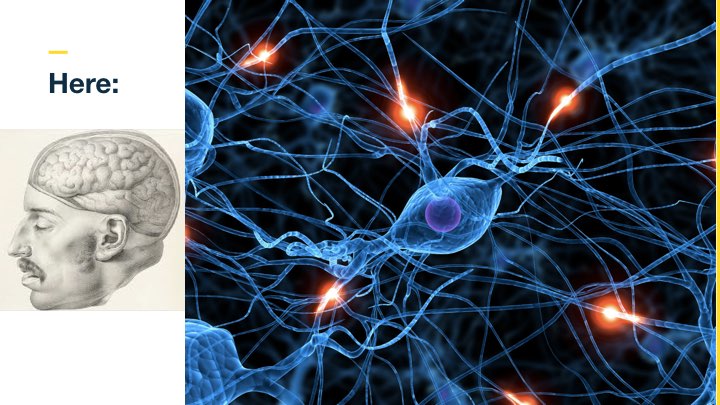
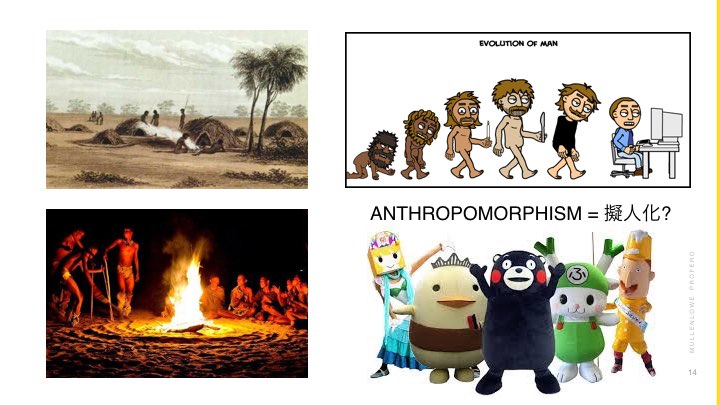
Leave a comment